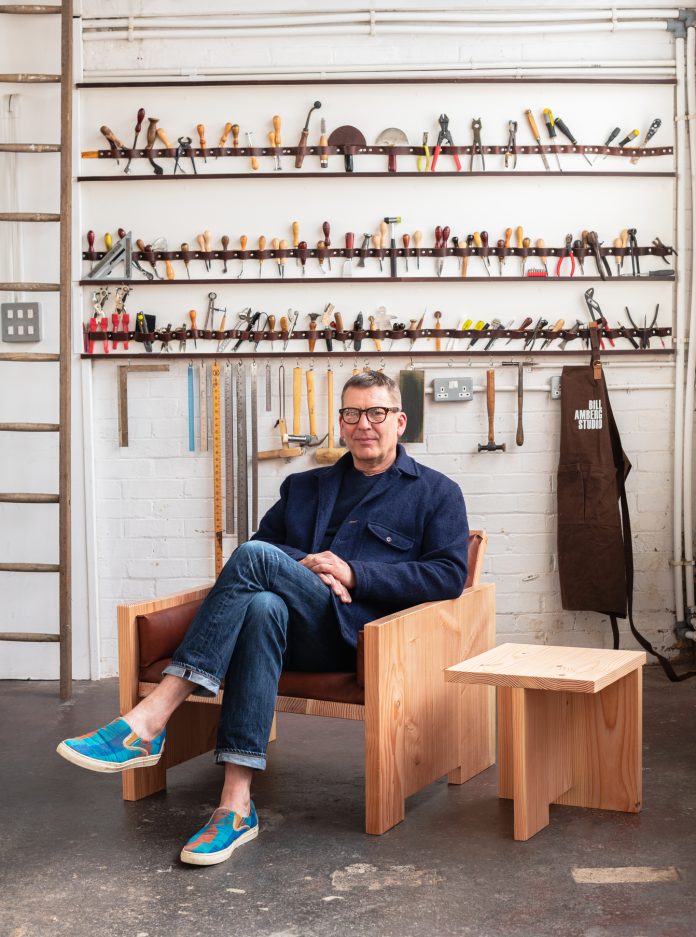Leather specialist Bill Amberg on transforming his eponymous studio from an international accessories business into a world renowned architectural and product design brand.
Tell us about your design background and the history of the brand.
I grew up in Northampton, right in the heart of Britain’s shoemaking industry, and started working with leather as a child using factory offcuts my mum, an architect, brought home. That early fascination with the material never left. I set up the studio over 40 years ago, and since then we’ve worked across accessories, architectural interiors and furniture, from the Rocket Bag, now in the V&A and Met Museum, to large scale private and commercial architectural installations such as The Lever Building in New York and The Royal Academy Lecture Theatre in London. Our focus has always been on combining heritage techniques with cutting-edge technology to push the boundaries of what leather can do.
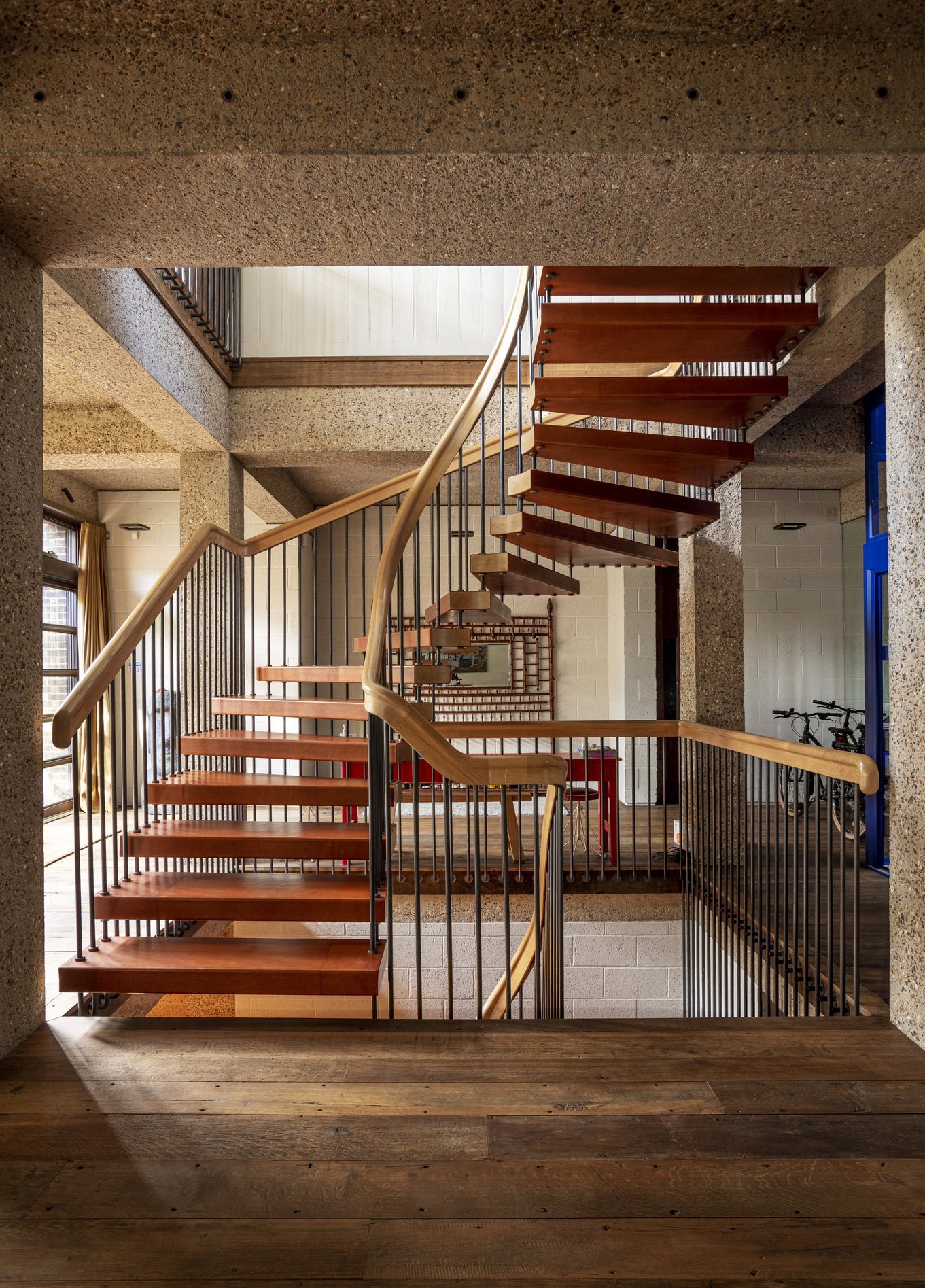
What does Bill Amberg Studio represent as a design company?
We’re a bespoke leather design company working across interiors, product and architecture. Our team designs, develops and manufactures everything from furniture and fittings to large-scale installations, collaborating with architects, interior designers and private clients worldwide. As a studio, we have a deep respect for craft and materials, combined with a drive to innovate and explore new possibilities for leather.
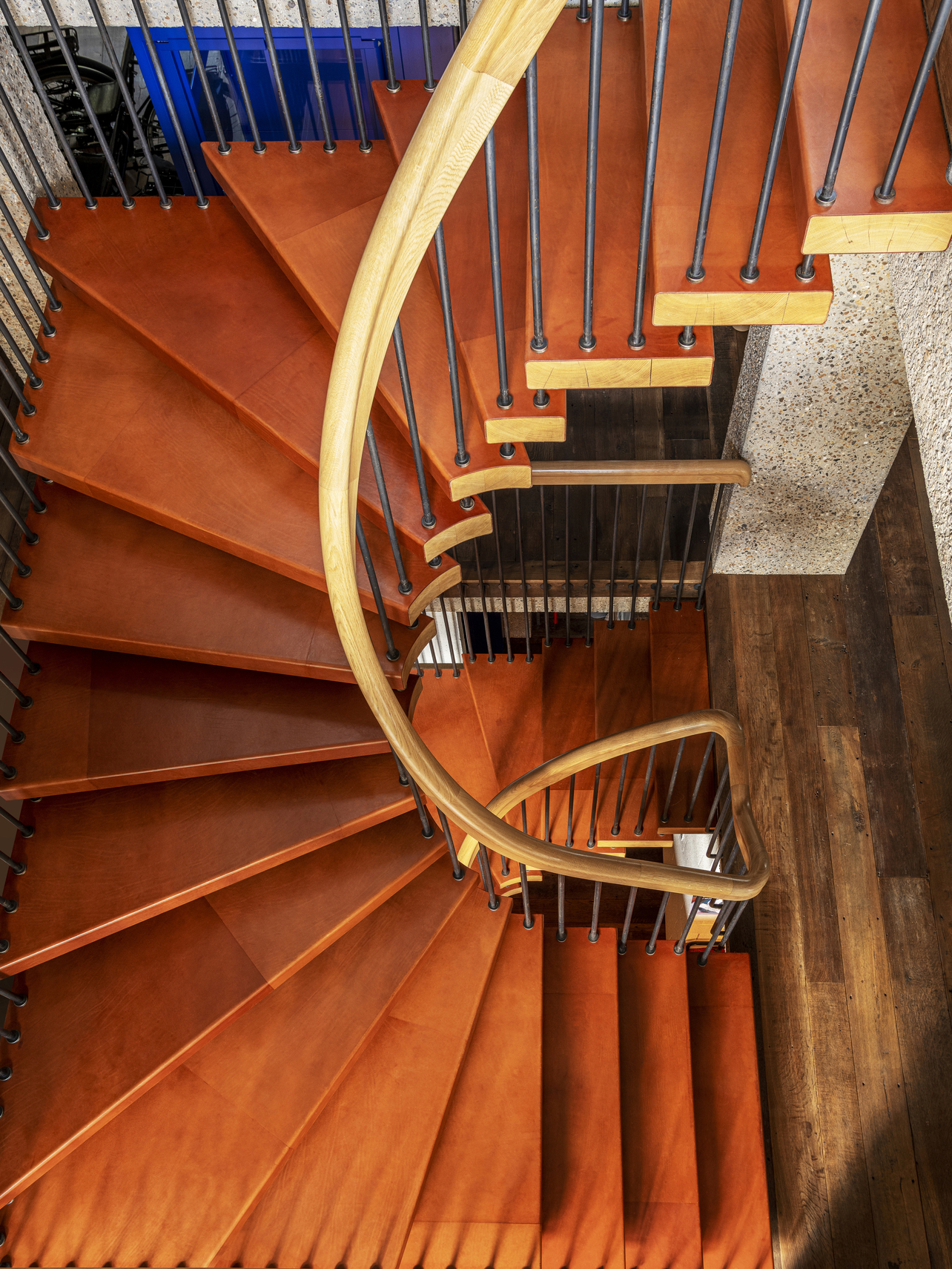
How do you continue to innovative in the industry?
We are always experimenting with the material that we love. Recently we have developed two new techniques for using our leather off-cuts. The first is STACK, where the leather is cut into thin strips and bonded together with bio resin to create a solid, striped-effect board from which we have designed a range of different furniture pieces. The second is CHOP which again uses offcuts bonded with bio-resin but has a more marbled, ‘leather Terrazzo’ looking finish. Both techniques are continuing to evolve and we are enjoying watching their use in both furniture design and architectural installations.
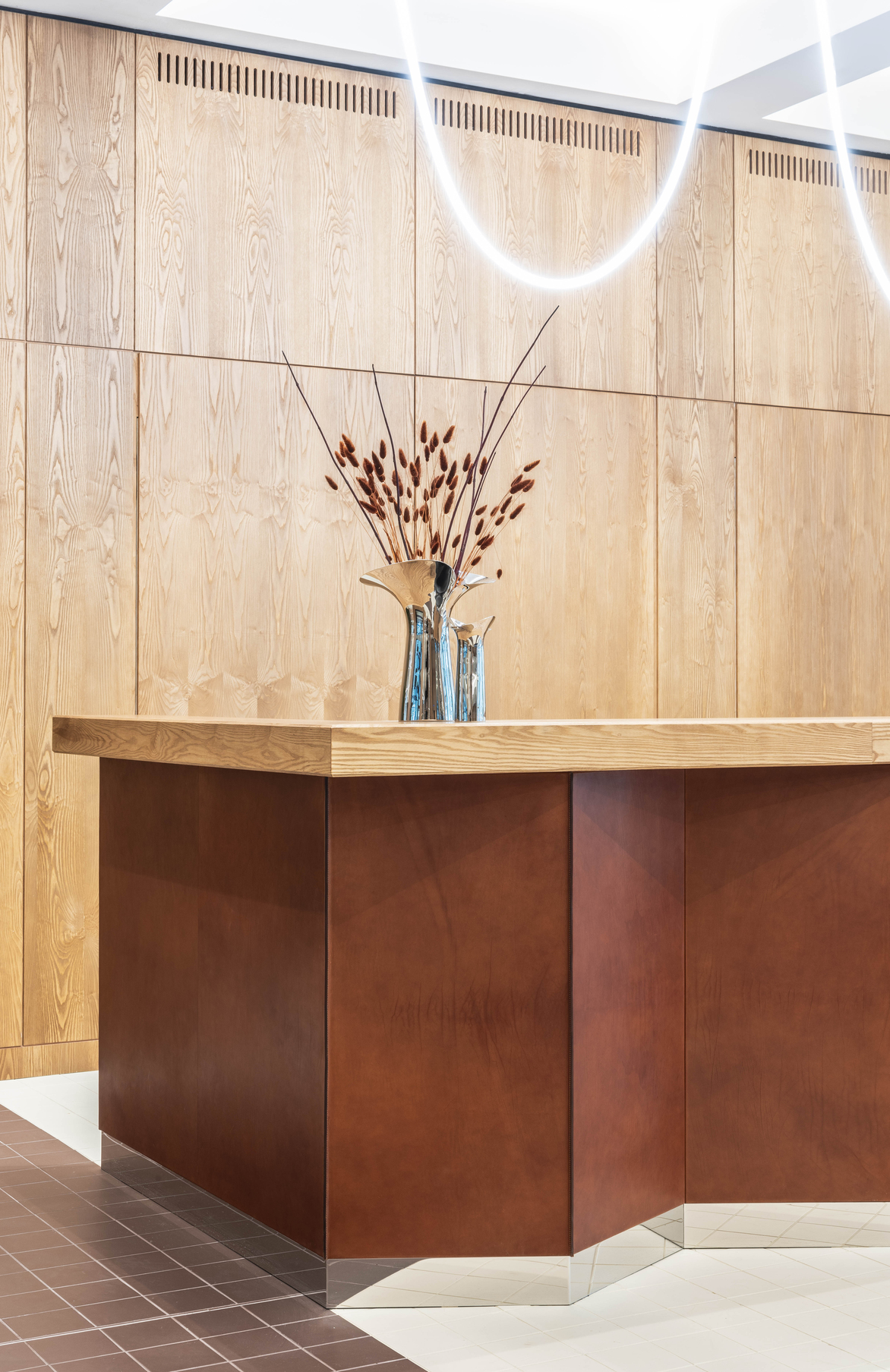
How do you manage working globally?
The bespoke nature of our work has meant that we have created systems where we can develop and build pieces in our London workshop which can then be shipped and fitted all around the world. With any job the process start with a site survey allowing our London based craftsmen to create accurate and precise pieces that are ready to install wherever their final destination.
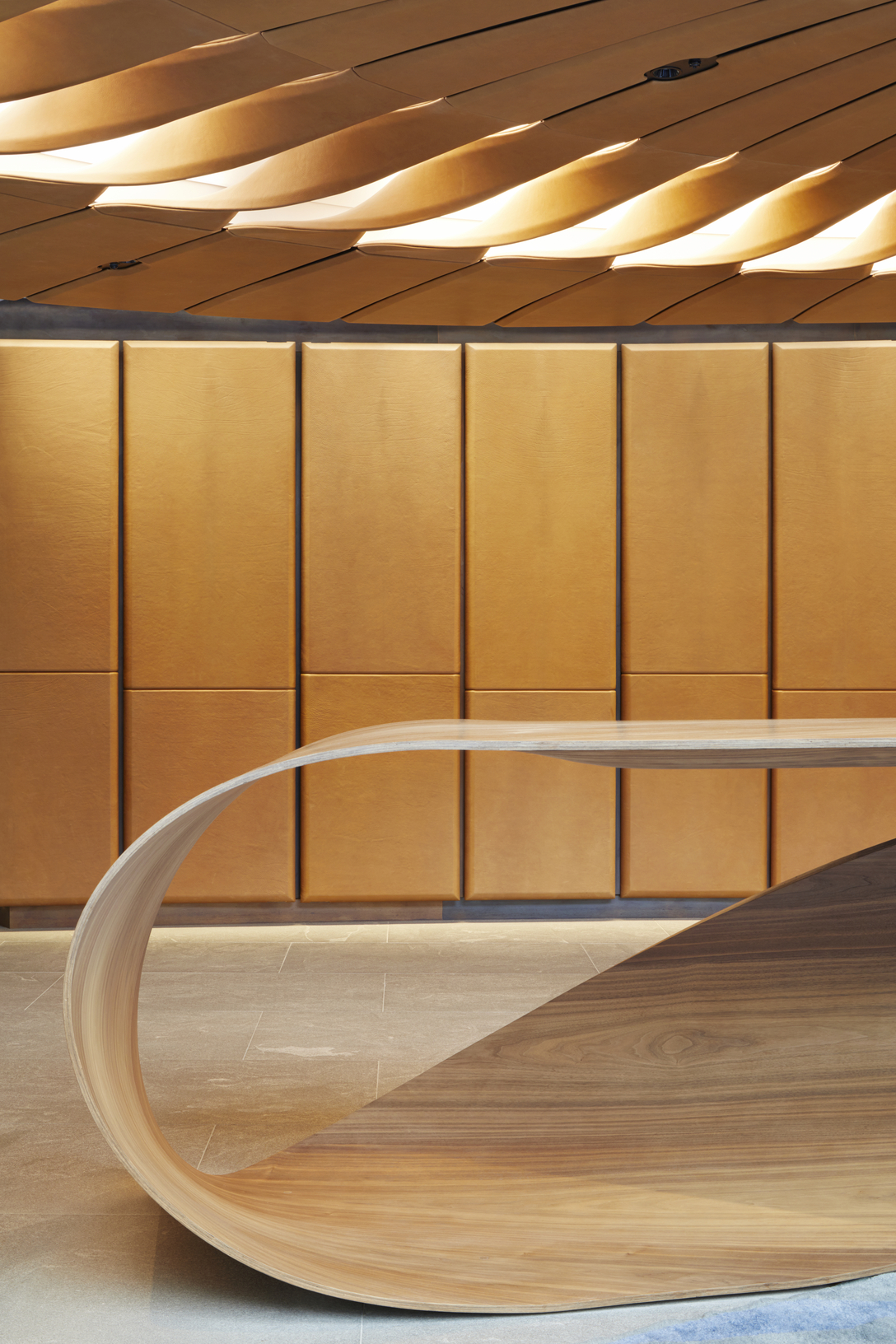
What is the biggest challenge for Bill Amberg Studio in the global surface material industry?
Continuing to promote and celebrate leather – a wonderful, sustainable bi-product in a world full of rapidly expanding choices. It is both elegant and practical from its inherent fire retardancy to its quiet, sophisticated warmth it remains an entirely unique material.
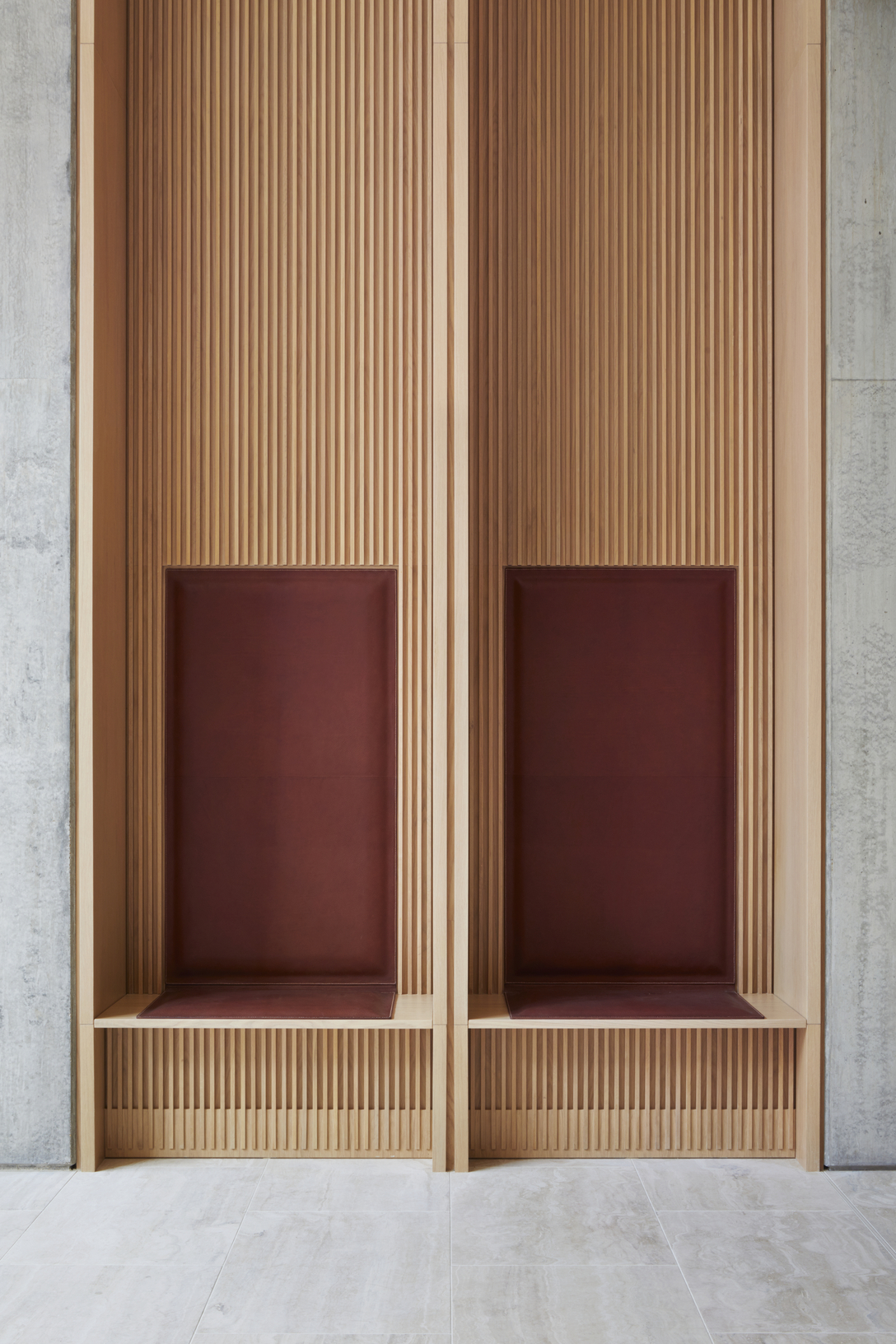
How do you tackle issues surrounding sustainability in the interior design industry in your own studio and processes?
Sustainability has been part of our philosophy from the very beginning. My mother worked for Alvar Aalto, and that early exposure to Nordic design instilled a belief in honest materials and longevity. Leather itself still fascinates me as a material, and as new technologies have emerged, I have embraced them to further explore leather’s boundless potential. Being a by product of the meat industry, the sustainable credentials of leather make it even more desirable in a world appropriately focused on the provenance and environmental impact of design materials.
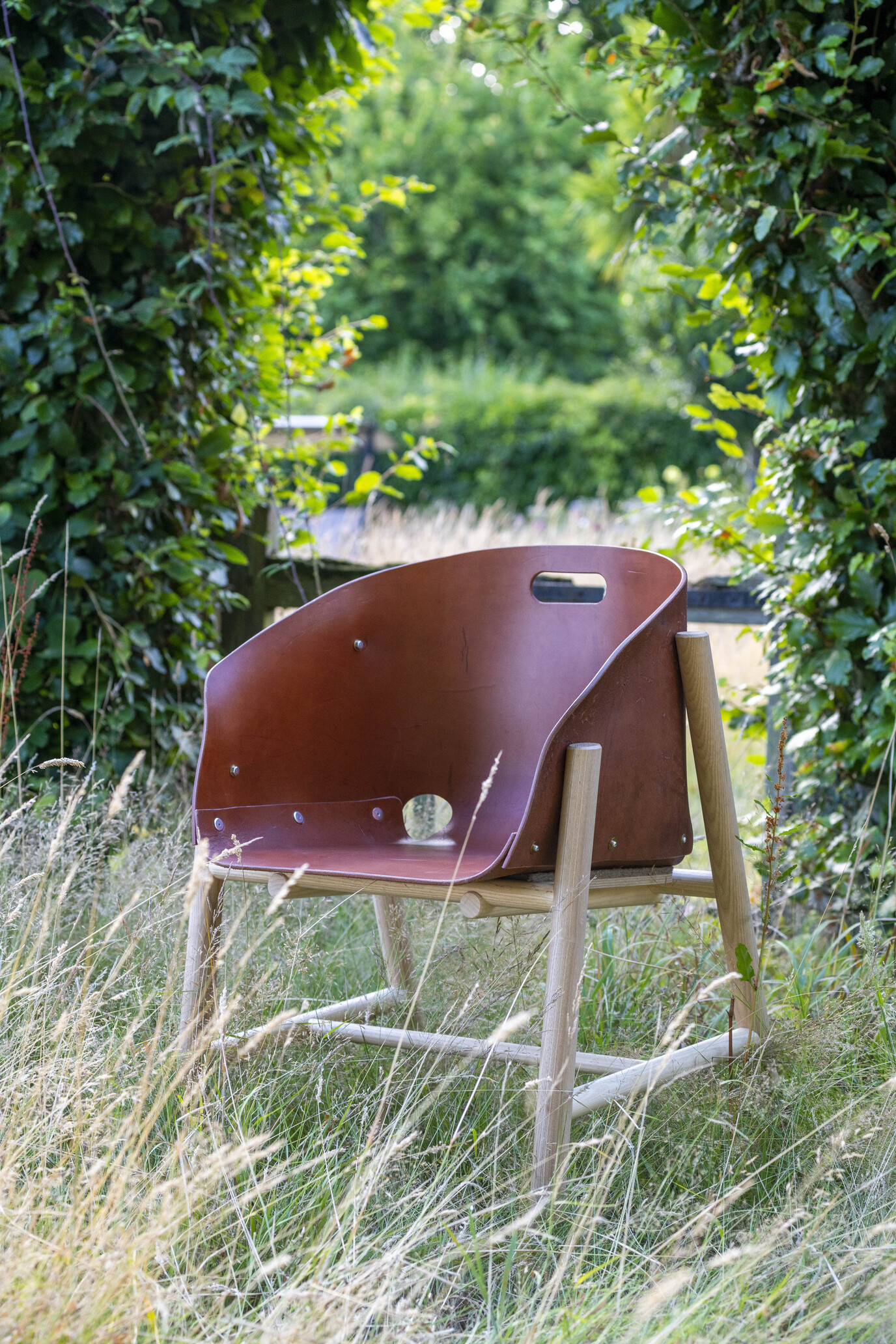
What are you focused on for the rest of the year?
We have become a specialist in leather staircases and are working on a wonderful project in Baltimore with Marmol Radziner which is technically challenging but will hopefully be rather extraordinary. In terms of furniture, we are in the process of developing a beautiful chair with Goddard Littlefair which will launch later in the year. We are also working on another exciting new chair project with the brilliant, young designer and craftsman Joss Stoddart and that too should be launched in Autumn 2025.








